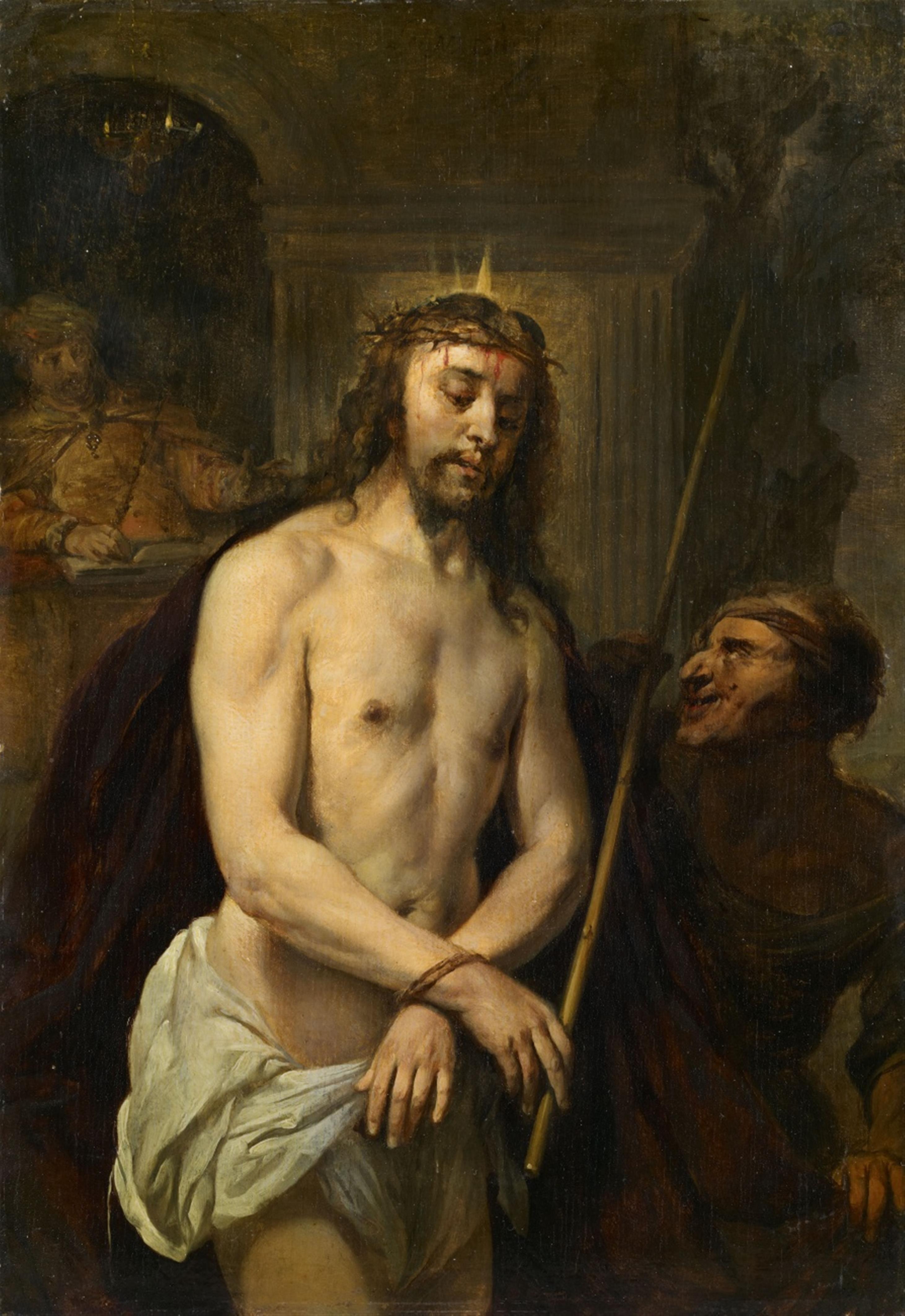Gabriel Metsu
Ecce Homo
Oil on panel. 37 x 26 cm.
Signed upper centre: G Metsu[e].
The present “Ecce Homo” is a work of Metsu's later phase, which was characterised by a return to religious subjects. This last period incorporates three other paintings: “Noli me tangere” (Kunsthistorisches Museum, Vienna), “Saint Dorothy” (private collection) and the “Crucifixion” painted in 1664 (Pinacoteca Capitolina, Rome). Adriaan Waiboer, author of Metsu's catalogue raisonné, describes the phase as follows: “Though not his typical genre scenes, these paintings are among the most stunning works of Metsu's career.” (Waiboer 2012, op. cit., S.115).
The “Ecce Homo” displays strong parallels to the two passion scenes mentioned above. Christ's facial features are highly similar, and the fine detailing of the musculature lends the image the same sense of dynamism. The masterful use of light evident in all three paintings makes the figure of Christ stand out against a dark background, accentuating the importance of the moment. In the present work, the highlighting of the saviour's ivory-tinted flesh serves to break up the otherwise monochromatic colour scheme.
Waiboer writes: “Ecce Homo is the most enigmatic of the three Passion scenes.” (Waiboer 2012, op. cit., p. 117). He presumes that the left side of the panel has been trimmed by a few millimetres. This would explain why it seems slightly thicker on this side, and why the figure of Pilate appears to have been placed so far out of the way. Metsu uses this positioning as well as the colouration of the scene to relegate Pilate to the background, making the image appear mysterious to the viewer.
We would like to thank Dr. Adriaan Waiboer for examining this work first-hand and confirming it to be the original work by Gabriel Metsu which he has long been searching for.
Provenance
Presumably the D. Teengs collection. - Auctioned by Van der Schley, Yver, Roos, Spaan (D. Teengs collection), Amsterdam, 24.4.1811, lot 81. – Gruyter collection. – Presumably auctioned in London, 6.5.1929, lot 136. – 1929 R.H. Ward art dealers, London. – February 1930 P. de Boer art dealers, Amsterdam. – November 1930 R.H. Ward art dealers, London, until at least July 1931. – April 1932 Dr. Schäffer art dealers, Berlin. – 1934 Ludwig Rössler, Berlin. - 1936 W. Paech art dealers, Amsterdam. – July 1941 P. de Boer art dealers, Amsterdam. – Ca. 1943 Goudstikker art dealers. – Presumably the Lemberger collection, Amsterdam. – The H. Bandermann collection. – Private collection, Germany.
Literature
Adriaan Waiboer: Gabriel Metsu, Life and Work - A Catalogue Raisonné, New Haven/London, 2012, p.115-118, 252. - Adriaan Waiboer: Gabriel Metsu, National Gallery of Ireland, Dublin, 2010, p. 2-3. - Franklin W. Robinson: Gabriel Metsu (1629-1667), A Study of His Place in Dutch Genre Paintintg of the Golden Age, New York, 1974, p.134.

